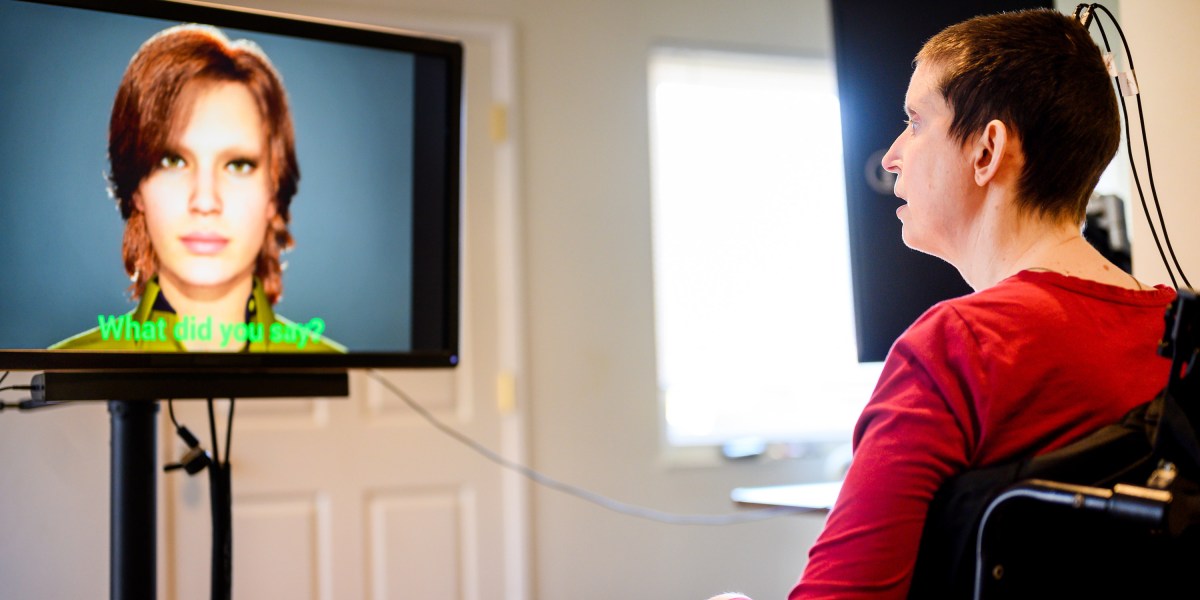
Speech using these interfaces isn’t seamless. It’s still slower than normal speaking, and while an error rate of 23% or 24% is far better than previous results, it’s still not great. In some instances, the system replicated sentences perfectly. In others, “How is your cold?” came out as “Your old.”
But scientists are convinced they can do better. “What’s exciting is that as you add more of these electrodes, the decoder performance keeps going up,” says Francis Willett, a neuroscientist and author on the Stanford paper. “If we can get more electrodes and more neurons, then we should be able to be even more accurate.”
The current systems aren’t practical for home use. Because they rely on wired connections and a bulky computer system to handle the processing, the women can’t use the brain implants to communicate outside of the experiment. “There’s a whole lot of work still there to turn this knowledge into something useful for people with unmet needs,” says Nick Ramsey, a neuroscientist at the UMC Utrecht Brain Center in Amsterdam and author of an accompanying commentary.
Illes also cautions that each team is reporting results from a single individual, and they may not hold for other people, even those with similar neurological conditions. “This is a proof of concept,” she says. “We know that brain injury is really messy and highly heterogeneous. Generalizability even within the stroke population or the ALS population—it’s possible, but it’s not certain.”
But it does open up the possibility of a technological solution for people who lose the ability to communicate. “What we’ve done is to prove that it’s possible and that there is a pathway to do it,” Chang says.
Being able to speak is crucial. The participant in Chang’s study used to rely on a letterboard to communicate. “My husband was so sick of having to get up and translate the letterboard for me,” she told researchers. “We didn’t argue, because he didn’t give me a chance to argue back. As you can imagine, this frustrated me greatly!”
